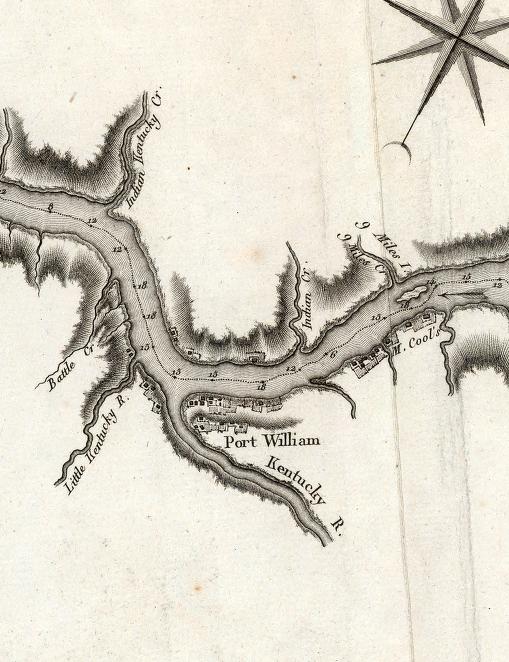Cemeteries have histories. And as a meeting place of East, Mid-Atlantic and South, Jefferson County was a mixed of the different kinds of cemeteries, which developed in different ways.
The rural South tended heavily to family cemeteries in the early years, as did much of Jefferson County with its strong southern contingent. The more urbanized East had more town cemeteries, and perhaps because early Madison's leadership included a number of New Yorkers, the town had a cemetery at the site of John Paul Park, which was removed to Fairmount late in the 1800s. Meanwhile, Madison founded Springdale Cemetery, a municipal cemetery, the only one of its kind if Jefferson County, but by far the largest.
Church cemeteries were often connected to the family cemeteries, particularly in the Indian-Kentuck basin that drains must the eastern section where several family burying grounds became the official church graveyards. Why is not known, but perhaps there were simply fewer good locations because of the hilly landscape.
The Milton Baptist Church, which existed from 1829 through 1836, and then from 1840 through 1883, was deeded its church cemetery in 1871 by Aaron and Sarah Hankins and it had previously been the Hankins family cemetery.
The origins of other church cemeteries are not so clear. But those with burials before the churches' founding include the cemetery of the former St. Anthony's Catholic Church at China, where the earliest burial, that of James Hamilton in 1847, preceded the church's founding. The Hamiltons were likely not Catholic and local families had an oral traditional about non-Catholic burials there.
Similarly, although the former Olive Branch Methodist Church in Madison Township was founded in its first burial was for Susan Hamilton, wife of James (the same James?), who died in 1820.
At Canaan, the burial of a Littlejohn came before the organization of the defunct Canaan Methodist church in 1834. The same is true for the Brooksburg Cemetery where are marked graves for 15 Bondurants who died before the founding of the Methodist Church there in 1891. Likewise, at Manville, where the church's founding preceded the establishment of the cemetery, several members of the Manville family were buried whose names appear nowhere on the church membership record.
The cemetery of Ryker's Ridge Baptist Church presents a more confusing case. There were at least three burials there (one Hillis, one Van Cleave, one Ryker), before a non-denominational church reportedly was founded in 1818, although there is no proof the cemetery was associated with that body. And while the Baptist Church was founded in 1840, there are other marked graves, 13 Hillis stones and 4 Ryker stones (not including the unmarked grave of John Ryker), which have dates for those who died before 1840. Complicating this is the fact there was a Presbyterian Church at Ryker's Ridge, possibly from the early 1820s through the mid 1830s. Both Ryker and Hillis families were largely Presbyterian at this point.
In the western part of the county what is now called the Wiggam Cemetery in Graham Township was originally known as Deputy's graveyard. That was the name it had when John and Elizabeth Wiggam deeded it to the trustees of the United Methodist Church on May 4, 1881. It's the only such transfer of a private graveyard to a church I have yet found in the western part of the county.
Community cemeteries also started early in the county's history. The cemetery now associated with the Hebron Baptist Church was founded as a private burying ground with the earliest burial in 1814 or 1815. It had its own trustees as late as 1830 and the land was later deed to the church, which was founded in 1828.
Also in Monroe Township was the Craig Cemetery, whose first known burial was in 1819. Then on Feb. 26, 1831, William, and his wife Mary Richie, and William Wallace, and his wife Sarah, deed land to the trustees of the burying ground. It was moved to Madison Township with the formation the former Jefferson Proving Ground in 1941.
The only community cemetery in Milton Township, the Joyce Cemetery, has obscure origins. Its first burials are from two families, the McKays and Brooks, and it may have taken shape because the nearby Home Methodist Church (ca. 1830-ca. 1970), had a location that regularly flooded. Certainly, the Brooks were largely Methodist. The earliest known burial was of Ann, wife of Humphrey Brooks, who died in 1832 and the second was for Nancy Brooks Neal, their daughter. The cemetery reportedly took its name from Pliny Joyce who had owned the land.
There are several cemeteries in the county that belong to vanished churches, and whose prior associations are not widely recognized. The Carmel and Old Bethel Cemeteries in Hanover Township are fairly well known as having been burying grounds for two extinct Presbyterian Churches.
Lesser known affiliations include the Valley Cemetery in Graham Township had been the graveyard for the Valley Methodist Church, but was transferred to a cemetery association. The McKay-Stites Cemetery in Smyrna Township may have been associated with the Upper Big Creek Presbyterian Church, later called the Mt. Pleasant Presbyterian Church and which faded into history after it moved to Dupont.
Interestingly, one trend in cemetery formation passed by Jefferson County, and that was the founding of burial grounds by fraternal groups. In Kentuckiana area, this meant primarily the Masons and the International Order of Odd Fellows.
Vevay's Cemetery was founded by the IOOF as were the Bedford and Carrollton, Ky., burying grounds and cemeteries in New Liberty and Owenton in Owen County. Ghent in Carroll County and Dallasburg and Monterey, Ky., in Owen County, have Masonic cemeteries.
There are probably two factors here. The fraternal cemeteries functioned essentially as town cemeteries and that role was already occupied by Springdale in Madison. Also, the other areas lacked Madison's Catholic population, which utilized St. Joseph's and St. Patrick's.

